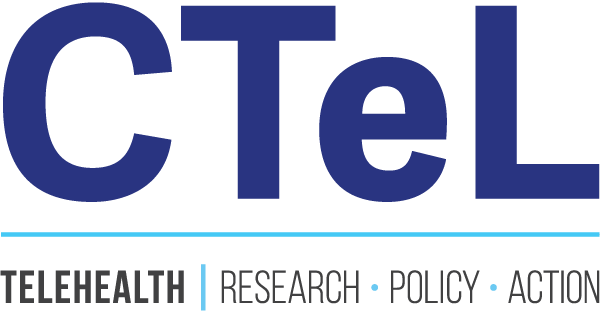Prescribing of Controlled Substances
Prescribing Controlled Substances via Telemedicine: New DEA Rules You Need to Know
The DEA has introduced three transformative rules shaping how controlled substances can be prescribed via telemedicine. These updates directly impact telehealth providers, telemental health practitioners, and healthcare systems managing opioid use disorder (OUD) and other treatments requiring controlled substances.
Stay Ahead with CTeL
At the CTeL, we understand the complexity of federal regulations. That’s why we’ve created comprehensive fact sheets to simplify these new rules and empower your practice.
What’s New?
1️⃣ Buprenorphine Treatment via Telemedicine (Final Rule)
Prescribe FDA-approved Schedule III-V medications for OUD via telehealth, including audio-only.
Initial prescriptions can now span up to six months without an in-person evaluation.
Mandatory PDMP reviews ensure patient safety.
2️⃣ Special Registrations for Telemedicine. (Proposed Rule)
A new framework for telehealth practitioners to prescribe controlled substances responsibly.
Features enhanced compliance requirements, recordkeeping, and reporting protocols.
3️⃣ Continuity of Care for Veterans Affairs Patients (Final Rule)
VA practitioners can prescribe controlled substances to VA patients via telemedicine without prior in-person evaluations.
Requires robust review of VA EHR and state PDMP data.
Download the Fact Sheets
Don’t let regulatory complexity slow you down. Access our free fact sheets and gain the confidence to navigate these new rules with ease.

DEA Final Rule: Transforming Telemedicine Prescribing Practices
The U.S. Drug Enforcement Administration (DEA) has issued a groundbreaking final rule to refine the prescribing of controlled substances via telemedicine. This update balances expanded access to care with the critical need to prevent substance misuse, ensuring the safe and effective delivery of telehealth services.
What’s New?
Telemedicine Flexibilities
Healthcare practitioners can prescribe controlled substances (III-V) via telemedicine, including initial prescriptions without in-person visits, allowing for audio-only visits.
Specific pathways are established for Schedule II and high-risk medications.
COVID-19-era telemedicine allowances are extended through December 31, 2025, ensuring uninterrupted care access.
Controlled Substances Limitations
Restrictions on the types and quantities of controlled substances prescribed via telemedicine, ensuring safety and compliance.
Limits on prescription durations for high-risk medications.
Initial prescriptions via telemedicine allow up to six months of treatment.
Monitoring prescribing patterns to prevent misuse and diversion.
Patient Safeguards
Enhanced identity verification to confirm patient legitimacy.
Strict documentation and consultation requirements to maintain medical necessity.
Pharmacists must confirm patient identity before dispensing medication.
Prescriber Responsibilities
DEA registration and compliance with state laws are mandatory.
Recordkeeping of telemedicine interactions is required for audit purposes.
Mandatory state Prescription Monitoring Program (PDMP) checks which ensures safe prescribing.
Implications for Telehealth Providers
Enhanced Access to Care: Easier access for OUD patients, especially in remote areas.
Compliance Mandates: Incorporate PDMP reviews, identity verification, and documentation protocols into workflows.
Operational Adjustments: Update procedures to align with stricter requirements for prescribing controlled substances.
Future Planning: Prepare for potential post-2025 legislative changes.
DEA Final Rule: Continuity of Care for Veterans
The Drug Enforcement Administration (DEA) and the Substance Abuse and Mental Health Services Administration (SAMHSA) have jointly issued a final rule titled "Continuity of Care via Telemedicine for Veterans Affairs Patients." This rule authorizes Department of Veterans Affairs (VA) practitioners to prescribe controlled substances via telemedicine to VA patients without a prior in-person medical evaluation, under specific conditions.
What’s New?
Authorization for Telemedicine Prescriptions:
VA practitioners, acting within the scope of their VA employment, are permitted to prescribe Schedule II-V controlled substances to VA patients via telemedicine without having conducted an in-person medical evaluation, provided that:
Another VA practitioner has previously conducted an in-person medical evaluation of the patient at any time.
Mandatory Review of Patient Records:
Before issuing a prescription via telemedicine, the prescribing VA practitioner must review:
The patient's VA electronic health record (EHR), including the internal prescription database.
The Prescription Drug Monitoring Program (PDMP) data for the state where the patient is located during the telemedicine encounter, if such a program exists.
Contingency for Unavailable Records:
If either the VA EHR or the state PDMP is unavailable or non-operational:
The practitioner may prescribe a controlled substance limited to a 7-day supply.
The practitioner must subsequently review both the VA EHR and the state PDMP data before issuing any further prescriptions via telemedicine.
States Without PDMPs:
In states lacking a PDMP:
The practitioner must review the VA EHR, including the internal prescription database, before issuing a prescription for a controlled substance exceeding a 7-day supply.
Exclusions:
This rule does not apply to:
Contracted practitioners located outside a VA facility or clinic providing care via the Community Care Network (CCN).
Practitioners conducting disability compensation evaluations.
Implications for Telehealth Providers
Enhanced Access to Care: This rule facilitates continuity of care for VA patients by allowing authorized VA practitioners to prescribe necessary controlled substances via telemedicine, reducing the need for in-person visits.
Compliance Requirements: VA practitioners must ensure thorough review of patient records, including VA EHRs and state PDMP data, before prescribing controlled substances via telemedicine to comply with the new regulations.
Operational Adjustments: VA healthcare systems may need to update protocols and training to align with the new rule, ensuring that practitioners are aware of and adhere to the specific conditions outlined for telemedicine prescribing.
The full 50 state report is an invaluable resource and a benefit to current members of CTeL. Non-members can purchase the full report in our store. Interested in finding out more and accessing the full report? Reach out today!




